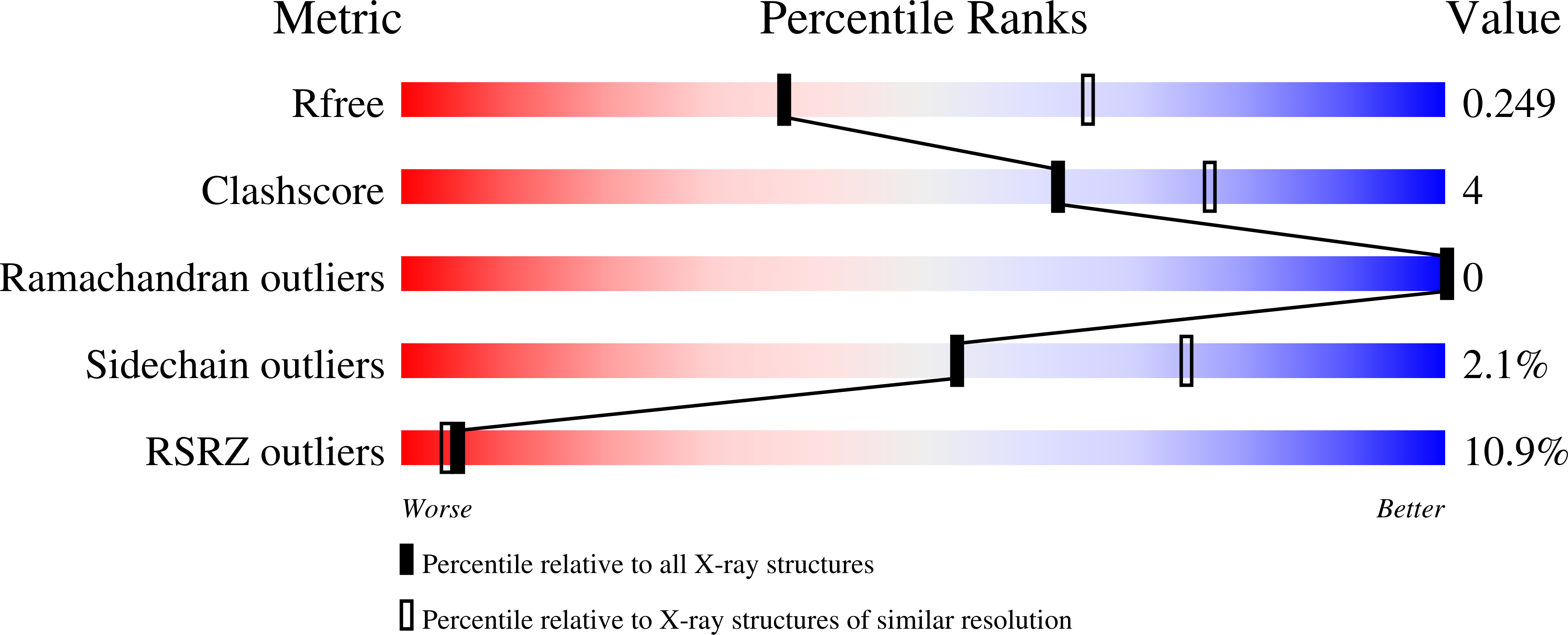The ErbB4 extracellular region retains a tethered-like conformation in the absence of the tether.
Liu, P., Bouyain, S., Eigenbrot, C., Leahy, D.J.(2012) Protein Sci 21: 152-155
- PubMed: 22012915
- DOI: https://doi.org/10.1002/pro.753
- Primary Citation of Related Structures:
3U2P - PubMed Abstract:
The epidermal growth factor receptor (EGFR) and its homologs ErbB3 and ErbB4 adopt a tethered conformation in the absence of ligand in which an extended hairpin loop from domain II contacts the juxtamembrane region of domain IV and tethers the domain I/II pair to the domain III/IV pair. By burying the hairpin loop, which is required for formation of active receptor dimers, the tether contact was thought to prevent constitutive activation of EGFR and its homologs. Amino-acid substitutions at key sites within the tether contact region fail to result in constitutively active receptors however. We report here the 2.5 Å crystal structure of the N-terminal three extracellular domains of ErbB4, which bind ligand but lack domain IV and thus the tether contact. This ErbB4 fragment nonetheless adopts a domain arrangement very similar to the arrangement adopted in the presence of the tether suggesting that regions in addition to the tether contribute to maintaining this conformation and inactivity in the absence of the tether contact. We suggest that the tether conformation may have evolved to prevent crosstalk between different EGFR homologs and thus allow diversification of EGFR and its homologs.
Organizational Affiliation:
Department of Biophysics and Biophysical Chemistry, Johns Hopkins University School of Medicine, 725 N. Wolfe St., Baltimore, MD 21205, USA.















